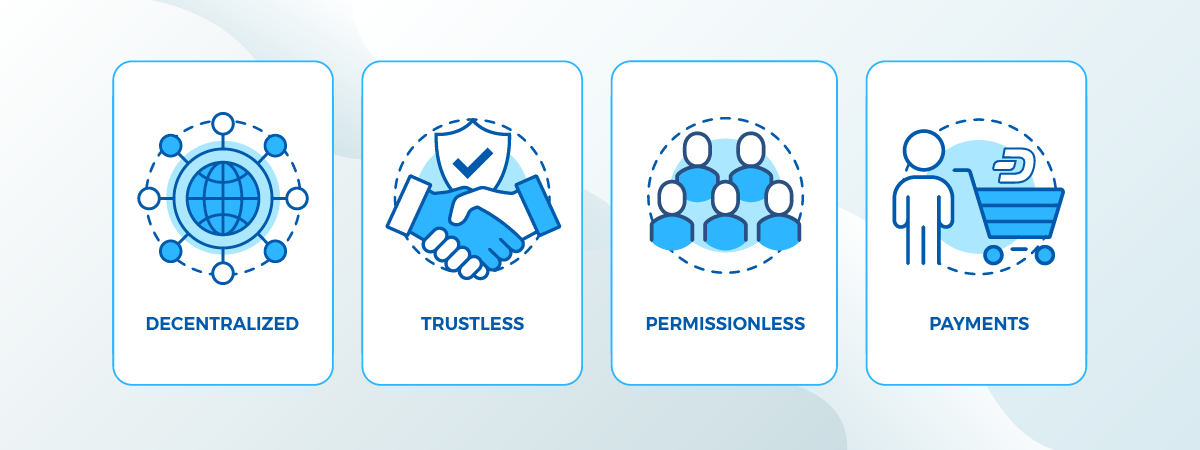The team behind Zaimirai has a long technology pedigree, starting with the earliest days of the internet. Even before the world wide web, we were online, using classic bulletin board systems (BBS) and pre-internet online services like AOL and CompuServe. We’re even talking the days of 1200 baud modems and MS-DOS. Ah, times have changed…and so have we! Yes, greybeards can also flow with trends and change with the times. We’re here to offer some perspective, then, to help you understand how it all emerged and why. We’ll share our thoughts about how Dash and Web3 will be part of your future.
History Lesson
Web 1.0
In its initial design, the plan for the world wide web was to facilitate open, decentralized, worldwide communication. In the early years of personal computing, online services such as AOL, CompuServe, and Prodigy arose — walled gardens for members to interact. When the web arrived, it didn’t require any ‘membership’. What is now known as ‘Web 1.0’ emerged in the early 90s and grew rapidly until after 2000, a largely “view only” mosaic of static websites. The gold rush of Web 1.0 built out massive infrastructure for computing and introduced the masses to what was possible.
Web 2.0
After the (painful) dotcom crash of the early 2000s, ‘Web 2.0’ emerged. Interactive websites and new social media websites like MySpace enabled more user interaction and sharing of user-generated content. Like the walled garden services of the 80s and early 90s, platforms like Facebook, YouTube, Twitter, and LinkedIn appeared. These communities, however, control the content. For example, Twitter and Facebook can flag or censor content. LinkedIn has even sued over a service that scraped content from within their walls. So despite the feeling of freedom with user-generated content, the reality is that the services have control on their platform. These issues have led to new thinking…
The Birth of Web3
Web3 aspires to provide a new, better internet. By decentralizing control using tools like blockchains, cryptocurrencies, and NFTs, control returns to the masses. If you look for a dictionary definition of Web3, you’ll find a wide range of answers, but it is based on four tenets.
Decentralization
Web3 ownership is distributed amongst its builders and users.
Trustless
Web3 operates based on incentives and economic mechanisms instead of centralized authority.
Permissionless
Everyone shares equal ability to participate and access to Web3.
Native Payments
Web3 uses cryptocurrency instead of banks and payment processors.
What Does Web3 Mean with Dash
If you’re familiar with the Dash ecosystem, you’re probably already linking the principles of Web3 to the features of Dash. No single cryptocurrency will be a standard in Web3 and various features will be better in some blockchains than others. Think of it as another layer of decentralization (and competition!). So let’s map those Web3 principles to Dash:
Decentralization
Dash was decentralized in its original fork-from-Bitcoin roots. It’s a blockchain solution out of the box. The addition of masternodes as a second layer extended this foundation even further.
Trustless
As a proof-of-stake blockchain platform, especially with new features being added in the next release of Dash Platform, Dash checks this box.
Permissionless
Have a phone or computer? You’re able to buy, spend, and sell Dash!
Native Payments
Check plus! Even better, Dash payment processing is among the fastest (thanks, masternodes) and least expensive.
Web3 and Dash
As Web3 evolves, Dash is well positioned to be a key platform. Its easy access, low fees, fast transactions, privacy, and security are just what Web3 requires. “Digital Cash” is useful and flexible, and with the evolution (pun intended) of Dash Platform, a growing number of features will make Dash an even better option in this new world. To be massively competitive, Dash will need to address smart contracts, which are not part of the original model. Integrating smart contracts into Dash will bring significant competitive advantages. That said, we’ve all come a long way from slow modems and walled gardens. As Dash continues its momentum, other platforms will start to look like they came from the 80s!


Leave A Comment